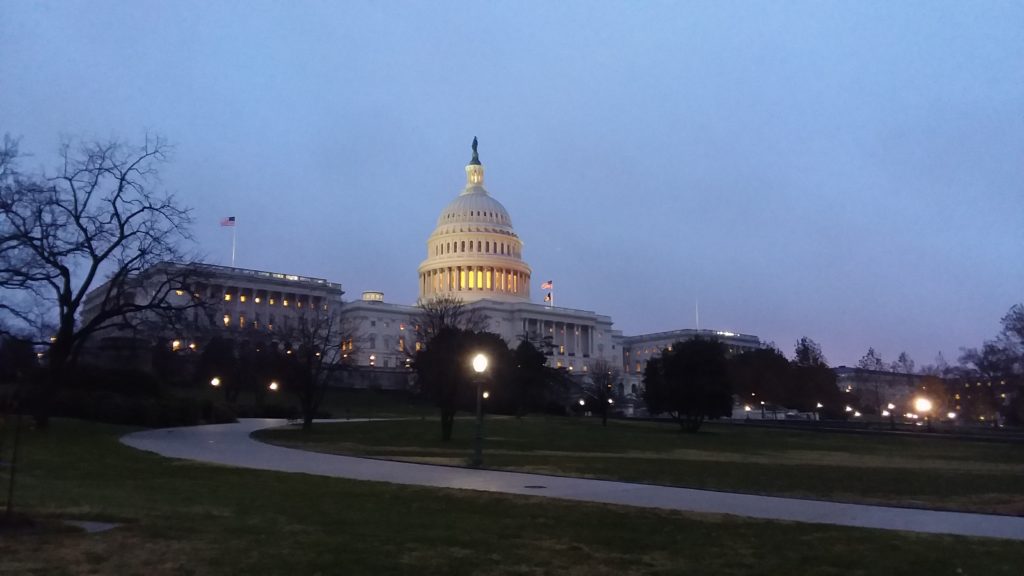The Department of Health and Human Services (HHS) will be sending $5 billion to all skilled nursing facilities in the U.S, President Donald Trump announced on Wednesday.
“Nursing homes in higher risk areas will be receiving more funding,” Trump said in his coronavirus briefing on Wednesday. “This money can be used to address critical needs, including the hiring of additional staff, increasing testing and providing technology support so residents can connect to their families.”
The funding will be available to Medicare-certified long-term care facilities and state veterans’ homes, the Centers for Medicare & Medicaid Services (CMS) later clarified.
More details will be forthcoming on how those funds are going to be disbursed, CMS administrator Seema Verma said on a press call after the president’s remarks on Wednesday.
“That being said, we’re going to be targeting those nursing homes that are in hotspots and that also are experiencing significant case load,” she said.
The $5 billion injection from the Provider Relief Fund announced Wednesday will join several other disbursements to nursing homes authorized under the $2 trillion CARES Act coronavirus stimulus package, including relief based on prior Medicare and Medicaid reimbursements — as well as a specific tranche of $4.9 billion dedicated exclusively to skilled nursing facilities.
Facilities were also able to receive up to $10 million in potentially forgivable loans through the Paycheck Protection Program (PPP).
In order to receive the most recent set of money, nursing homes must participate in an online COVID-19 training program.
“The training being offered has 23 educational modules and a scenario-based learning modules that include materials on cohorting strategies and using telehealth in nursing homes to assist facilities as they continue to work to mitigate the virus spread in their facilities,” CMS noted in a statement announcing the move. “This program supplements training already underway to better equip nursing homes to contain and stop the spread of COVID-19.”
Facilities with recent infection control deficiencies and reported cases will receive additional “specialized technical assistance,” according to CMS.
Increased testing requirements — eventually
Trump also announced that “increased testing of the nursing home personnel in states where you had the worst outbreaks” would be required.
Nursing homes located in states with a 5% COVID-19 positivity rate or higher must test all nursing home staff each week, according to CMS; that edict replaces a previous recommendation.
However, this mandate requires formal rulemaking, and Verma said on the press call that the Wednesday testing announcement was “a preview.” She declined to give a timeline for when the testing rule would be issued, though she said it “will come out very shortly.”
In addition to testing of all staff, the requirement would include testing for visitors, Verma said on the call.
“We want to make sure that there’s no COVID inside the nursing home, and then once we see that for two weeks, our recommendation will be to permit visitation and require testing of the visitors,” Verma said on the call.
The president highlighted the point-of-care testing initiative announced last week by HHS, with more 600 devices set to be shipped this week. In addition, CMS and the Centers for Disease Control and Prevention (CDC) are implementing a national training program on infection control “for the nursing homes that need it most,” Trump said.
“We have them surveyed and we have them mostly pinpointed,” Trump said. “Over the past few months, we have created a surveillance system to detect outbreaks, and currently 99% of all nursing homes are reporting directly to it. So we have great data.”
Inspections for facilities with new COVID-19 cases
CMS and CDC will provide a full list of facilities with increasing case counts, based on its existing data-collection efforts, directly to each state governor’s office each week “to ensure states have the information needed to target their support to the highest risk nursing homes,” according to CMS.
In addition, state governors will receive on a weekly basis a list of nursing homes with an increase of three or more COVID-19 cases among residents. States will be required to inspect those nursing homes, Verma said on the call.
Finally, CMS touted the work of specialized “Task Force Strike Teams” of federal health officials deployed to 18 facilities in Illinois, Florida, Louisiana, Ohio, Pennsylvania, and Texas earlier this week.
“The teams focused on the four key areas of support, including keeping COVID-19 out of facilities, detecting COVID-19 cases quickly, preventing virus transmission, and managing staff,” CMS reported. “The goal was to determine what immediate actions nursing homes needed to take to help reduce the spread and risk of COVID-19 among residents, and to better understand what federal, state, and local resources nursing homes need to ensure the health and safety of their residents.”
The American Health Care Association, which represents for-profit nursing homes, praised the announcement, though president and CEO Mark Parkinson called on Congress to include more aid in a future relief package.
“While this funding is a significant step forward, it is equally important for Congress to provide an additional $100 billion for the HHS Provider Relief Fund, which is accessible to all health care providers impacted by COVID-19, and that a sizable portion of the fund be dedicated to helping both nursing homes and assisted living communities to cover the enormous costs associated with protecting vulnerable residents and staff from the virus,” Parkinson said in a statement.
Katie Smith Sloan, president and CEO of non-profit senior care group LeadingAge, called the announcement “a good next step” but asked the federal government to provide a more comprehensive plan for protecting seniors during the ongoing COVID-19 pandemic.
“Perhaps the most important question our members and millions of older adults and their families have: Is this yet another patch in the patchwork federal response we’ve seen from the administration so far? Or is this announcement a signal that real relief is on its way?” Sloan said in a statement.
Alex Spanko contributed reporting.



